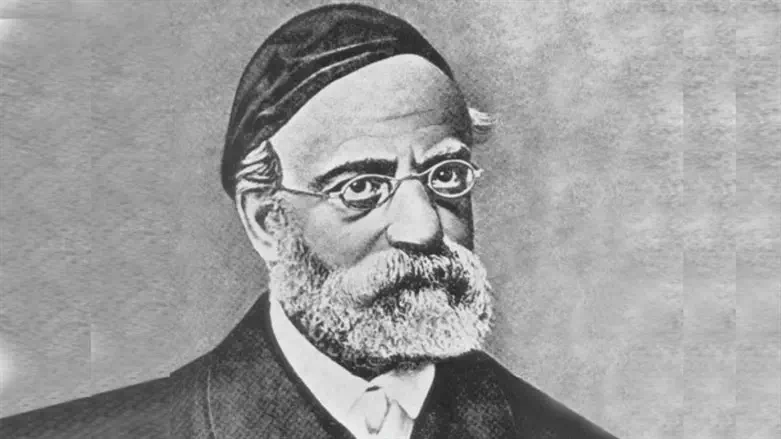
Rabbi Samson Raphael Hirsch:
Chukas: A boy can do it
A boy can perform only one mitzvah in the Torah that a woman can’t: the mitzvah of sprinkling the parah adumah water on an impure person. Why?
To answer this question, we must first explore the symbolism of the parah adumah. Rav Samson Raphael Hirsch suggests that a parah adumah – which is completely red, unblemished, and not yet impressed into the service of people – represents “the physical-animal side of man not mastered and controlled.”
“[U]ncontrolled physical animal nature,” however, has “no place within the Jewish national life of the people.” That’s why a kohen – representing G-d’s ideals – removes the parah adumah from all three camps of the Jewish people: machaneh Shechinah, machaneh Leviyah, and machanehYisrael.
Once outside these camps, the kohen slaughters the parah adumah. Jewish slaughter is a deliberate, skilled act, representing human wisdom and free will – which is the basis of the entire Torah (“zos chukas haTorah”). The physical world knows no freedom. Atoms, rivers, plants, animals all follow inexorable rules. But man is more than a physical entity. He has a soul, which makes him spiritual too, and also free.
Death, however, can make man forget this truth. He may think he too “stands, in his life, like all other organic beings in nature, under the spell of an irresistible overpowering force” in which case “[m]oral freedom of will would be an illusion” and “nowhere is there place for the moral ‘thou shalt’ next to the physical ‘thou must.’”
And so the kohen slaughters the parah adumah and sprinkles its blood toward the entrance of the Beis Hamikdash, thus “symbolically mastering physical sensuousness and directing it to the path of G-d’s moral law.” Subsequently, the heifer is burned with its ashes mixed into a vessel of “living waters” (representing man’s immortal element), which is then sprinkled on an impure person.
According to Rav Hirsch, a boy may sprinkle this water for the same reason a tevul yom may perform the various tasks associated with the parah adumah ritual. The Sadducees maintained that a tevul yom (an impure person who immersed in a mikveh but didn’t yet see sundown and thus achieved only the “lowest degree” of purity) may not perform these tasks. The Sages strenuously disagreed, however, to the point that they would intentionally contaminate the kohen in charge of the parah adumah so he could be a tevul tom.
According to Rav Hirsch, the position of the Sadducees was essentially elitist. They believed “only mental and moral perfection is free and immortal; everything on a lower stage still belongs to the transient perishable realm of physical force and lack of free will.” The Sages disagreed. “Even on the lowest stage, in every human being the divine freedom of will exists that divides him sharply from all physical transitoriness and makes him participate in moral freedom and eternal life.”
The same reasoning explains why a boy can sprinkle the parah adumah water. “It is the same wisdom that sees the tahor already in the tevul yom – the ‘pure’ already in the beginning of purity – which also allows one to see the future ‘man’ in the child.”
Rav Samson Raphael Hirsch (1808-1888) – head of the Jewish community in Frankfurt, Germany for over 35 years – was a prolific writer whose ideas, passion, and brilliance helped save German Jewry from the onslaught of modernity.
Elliot Resnick, PhD, is the host of “The Elliot Resnick Show” and the editor of an upcoming work on etymological explanations in Rav Samson Raphael Hirsch’s commentary on Chumash.